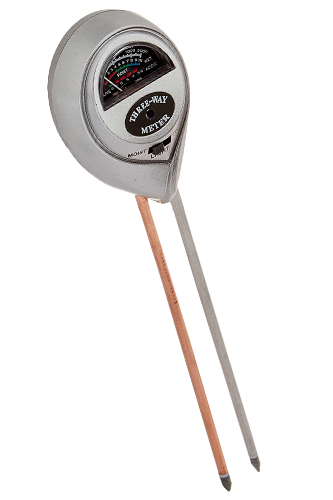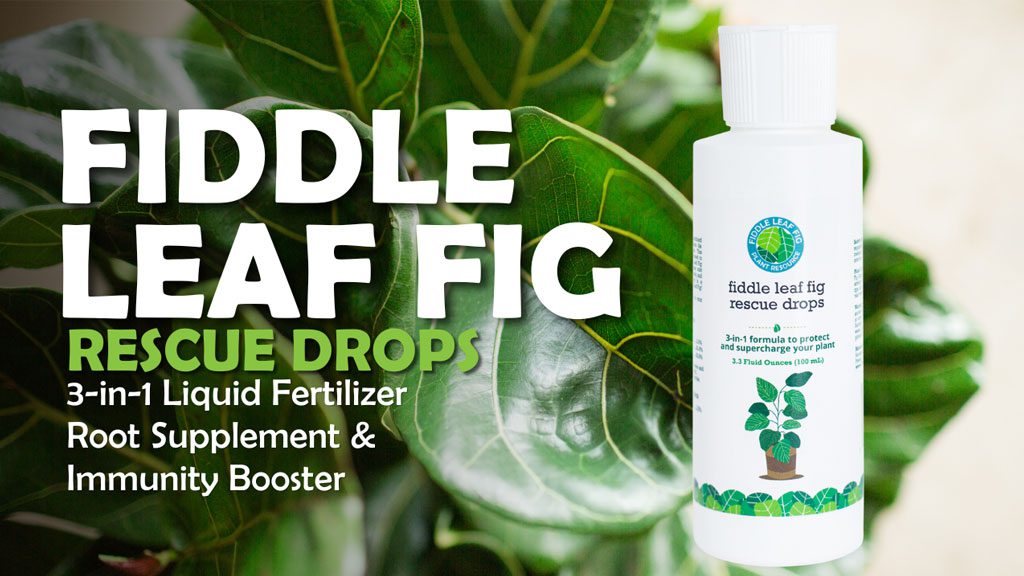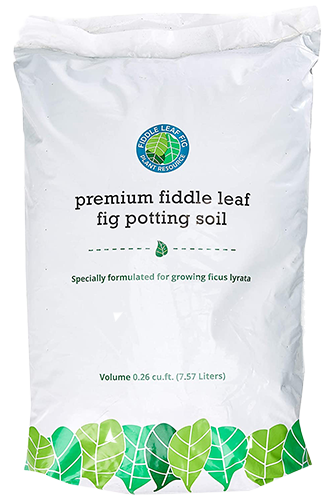Wondering how to separate fiddle leaf fig trees?
Watch this video from Meg Miller. She shows you how to separate the trunks of a fiddle leaf fig bush to eventually shape it into a single stalk tree.
How to Separate Fiddle Leaf Fig Trunks
Most fiddle leaf fig owners start out with a bush-shaped plant.
If you go to a garden center to buy a fiddle leaf fig, you’ll most likely find a bushy plant in the 2-3 foot range in size. (We don’t recommend spending hundreds of dollars on a large tree-shaped plant if this is your first fiddle!)
If your goal is to take your new fiddle leaf fig bush to a tree shape within the first few months of being home, the first step may be to separate the trunks of two ficus lyrata plants.
If you gently move aside the leaves to see the trunk, you’ll most likely see two or more trunks in the same pot!
After you pull apart the root systems of those stems, you’ll be able to shape your fiddle leaf fig bush into a tree. This does take a bit of work and planning, but it’s very doable!

How a Fiddle Leaf Fig’s Root System Works
First, we have to learn a little bit about how the roots of a tree work.
Contrary to most popular assumptions, the large girthy roots that reach straight down are not the ones that soak up the most nutrients.
Those serve more as anchors to the ground than feeders. It’s those tiny peripheral roots that absorb the most nutrients from the soil, and when you cut them, you will inevitably send your plant into root shock.
The first rule of fiddle leaf figs is that they don’t like change, so to prep your plant for the impending shock of separating the root systems, we recommend root pruning at least 6 weeks after getting the plant and about 6-8 weeks before separating the plants.
Used by horticulturists for decades, this method cuts the roots without moving them.
How to Prune the Roots
Separate fiddle leaf fig trees and prune the roots:
Root pruning is a technique that isolates that traumatic experience from other environmental changes like a new soil mix, a different plant or pot, and a foreign location.
Root pruning is a lot easier than it sounds.
Using a sharp blade, simply cut a trench through the root ball between the plants. Then fill that trench with a fresh, nutrient-rich potting mix that has some fertilizer.
Finally, soak your plant until water runs out the bottom.
After that, all that’s left to do is wait and continue watering when your moisture meter reads low. Don’t change anything else about your plant’s environment while it’s recovering from root pruning.
Root pruning prompts a flush of brand-new feeder roots so that when you separate and repot the plants, there will already be plenty of mature feeder roots ready to absorb nutrients.
Over the next few days and weeks, it’ll be invisible to you. But as these new feeder roots begin to mature, they will lower your risk and severity of transplant shock once you do choose to separate those stems.
How to Separate Fiddle Leaf Fig Plants
What you’ll need:
- Clean planter pots with drainage
- A sharp knife or spade
- Gardening gloves
- New potting mix
By now, your plant should have put out plenty of new feeder roots.
First, prep your new pots with potting mix so they’re ready for their new fiddley tenants. For more, read How to Repot a Fiddle Leaf Fig Tree.
Now it’s time to separate fiddle leaf figs.
Use the spade to dig down between the plants like you did 6-8 weeks ago.
You will feel roots popping apart, but if you come to any substantial resistance, just use a sharp, sterile pair of pruning shears like these to cut through.
Again, the most resistance should have been teased apart weeks ago when you did your root pruning.
As you work, your plants may try to flop over onto the ground, so do your best to keep them somewhat upright to prevent trauma to the leaves. The trunk is pretty sturdy, but those leaves should be handled with extreme care.
Once you’ve loosened the roots, use the spade to gently lift out the newly separated plants and lower the root balls into the new pots. Cover with fresh potting mix, but leave about 2 inches on top for water.
It’s important now to water and fertilize your new plants.
Remember to make sure you wet them enough that water runs out the bottom.
This ensures that all those new little feeder roots get the water and nutrients that they need right away.
I like to add Fiddle Leaf Fig Plant Food to my watering can each week because it takes all the guesswork out of fertilizing. Give it a try!
Your trees just went through a lot, so don’t expect new growth for at least four months after separating or splitting the trunks. Again, after such an event, survival is the tree’s new goal, so expect your new plants to conserve energy for quite a long while.
As long as they stay alive, that’s all we can ask for at this point.
After a while, they’ll get back into the groove of things and start producing more leaves and branches. Just keep up with a consistent care schedule, and your plant should recover and flourish within a few months.
When to Separate Your Fiddle Leaf Fig
Not sure if you can separate fiddle leaf fig trees? Read this full guide to know if your plant is ready to be broken up into multiple plants.
Grab the Essentials for Your Fiddle Leaf Fig:
- Premium Fiddle Leaf Fig Potting Soil
- Fiddle Leaf Fig Plant Food
- Root Rot Treatment
- Houseplant Leaf Armor to protect against insects, bacteria, and fungus (As an added bonus, it also cleans and adds shine to your plant’s leaves!)
- Moisture meter to always know when your plant is thirsty.
To learn more:
- Read The Ultimate Watering Guide to take the guesswork out of watering your houseplant.
- To learn more, sign up for our free Fiddle Leaf Fig Care 101 Webinar for advanced fiddle leaf fig care.
- Make sure you’re subscribed to our newsletter.
- Read The Fiddle Leaf Fig Expert, your complete guide to growing healthy fiddle leaf fig plants. The book is available in full-color paperback or Kindle edition on Amazon now!
- Click to join our community on Facebook: Fiddle Leaf Fig Plant Resource Group.


















